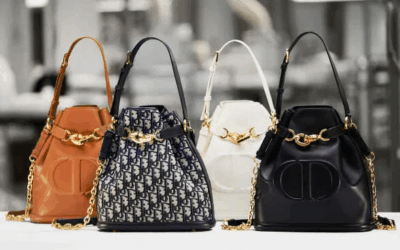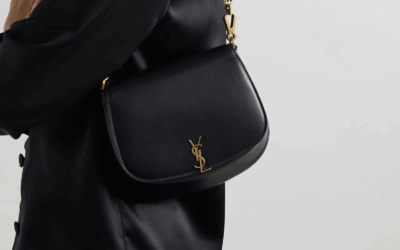 Embark on a Cosmic Journey Through the Paradoxes of Luxury and Dupes
Embark on a Cosmic Journey Through the Paradoxes of Luxury and Dupes
The Power of Mess: Jane Birkin’s Iconic Rejection of the Traditional Handbag
by Thea Elle | June 25, 2025 | Luxury Industrial Complex
Before the Birkin became a luxury icon, it was just a woman’s name. And before that woman, it was nothing more than a humble straw basket picked up at a small-town pharmacy in southern France. Jane Birkin — muse of her era and eternal symbol of effortless cool — never set out to spark a fashion revolution. Ironically, she did exactly that by not trying at all.
Her basket, soft and always spilling over, stood in stark contrast to the structured, high-end handbags of her time. While others carried sleek leather accessories adorned with metal accents, she toted a bag made for groceries. It was chaotic, impractical, and intensely personal. The more it clashed with Parisian sophistication, the more it stood out — not for function or prestige, but for its contradiction. Much like Jane herself.
She didn’t embody luxury in the polished, aspirational way it’s sold today. What made her unforgettable was her refusal to conform. With a loosely buttoned shirt, tousled hair, and a nameless basket at her side, she redefined style on her own terms. In the quiet rebellion of her charm and disarray, a new fashion ethos quietly took root.

The Basket That Came Before the Bag
Jane Birkin’s straw basket was more than just a container for her belongings—it embodied a mindset. At a time when fashion leaned heavily into opulence and display, her modest tote offered quiet defiance. While others sported monogrammed leather from GUCCI or signaled status with CHANEL, Birkin opted for something raw, imperfect, and deeply authentic. The difference wasn’t just in appearance—it came from an entirely different philosophy.
Her choice wasn’t calculated. The basket carried whatever she happened to need—baby bottles, bread, letters, or cigarettes. Sometimes it was frayed at the edges or held together with bits of string. But those imperfections only added to its charm. It didn’t accessorize her wardrobe—it accompanied her life.
Her choice wasn’t calculated. The basket carried whatever she happened to need—baby bottles, bread, letters, or cigarettes. Sometimes it was frayed at the edges or held together with bits of string. But those imperfections only added to its charm. It didn’t accessorize her wardrobe—it accompanied her life.
In an age obsessed with polish and coordination, her basket represented a subtle kind of rebellion. No logos, no gleaming hardware, no four-figure price tags—just a basic object doing its job. Yet for those paying attention, it radiated a cool that no luxury designer could imitate.
Effortless Style, Unintended Symbol
There’s a distinct grace in not trying too hard. Jane’s basket gained iconic status not through strategy, but by simply existing in her orbit. It wasn’t promoted or produced with fanfare. It didn’t need to be. It embodied a way of living—messy, open, and real—where style arrived as a byproduct of being oneself. That’s part of why she remains unforgettable.
The basket mirrored Jane’s spirit. It was frayed but beautiful, humble yet expressive, and a little exposed in a way that felt human. Like Jane, it was both grounded and daring. In a world that often equates fashion with exclusivity, her basket felt within reach. All it required was confidence—and disregard for convention.
Explore New Arrivals Here
That was its quiet magic. Bought at a street market, tucked beneath café tables, filled with life’s randomness—it wasn’t glamorous, but it was magnetic. Its appeal came not from design, but from spontaneity. That unstudied charm became part of Jane herself. The basket turned iconic simply by keeping pace with her unfiltered life.
Though the original no longer survives, its message still resonates. Style doesn’t have to be curated, branded, or performed. Sometimes true elegance exists in motion—unnoticed, unpolished, and undeniably real. In a world obsessed with appearances, the basket remains a reminder of the power of authenticity.
From Basket to Bag: An Unlikely Evolution
One of fashion’s most curious twists is found in Jane Birkin’s story. The woman uninterested in handbags inspired the most coveted one in the world. During a flight with HERMES executive Jean-Louis Dumas, she casually mentioned how her basket kept spilling. That moment sparked the concept of something sturdier. The sketch that followed gave birth to the Birkin bag—structured, luxurious, and a world apart from what made Jane so compelling.
Jane never aimed to be the face of luxury. Her impact came from living on her own terms. What started as a functional fix for her daily chaos became a global emblem of prestige. Over time, the Birkin bag grew distant from its origin. While Jane represented freedom and unpredictability, the bag came to symbolize order, rarity, and control.
That shift is telling. A practical solution was transformed into a status icon. But Jane’s real legacy wasn’t the bag—it was her way of being. Her basket, flawed and full of life, told a different story. It held crumbs, blossoms, cigarette packs—proof of a life unfiltered and unapologetic. That kind of raw freedom remains rare, which may be why it still resonates so deeply.

A modern Birkin bag next to a market basket filled with wildflowers.
The Trade-Off of Icon Status
The original basket vanished long ago, replaced by a luxury classic crafted from fine leather and accented with gleaming hardware. As the Birkin bag rose to legendary heights, it brought with it exclusivity, extensive waitlists, and subtle indicators of status. It became an unspoken symbol of achievement. Yet for all its acclaim, it never truly embodied the woman who sparked its creation.
Jane Birkin’s basket was never just something to carry things—it expressed a way of life. It captured a sense of freedom, effortlessness, and spontaneity. Her style wasn’t curated or performative; it felt personal, fluid, and instinctive. The basket didn’t suggest arrival or success—it suggested movement. It belonged to someone in motion, slightly disheveled, but entirely herself. That kind of authenticity isn’t something a designer label can replicate.
And that’s where the contradiction lies. As the Birkin became more polished and aspirational, it drifted further from the spirit of Jane herself. The bag evolved into a token of ambition, while Jane remained a symbol of untethered living. Her style wasn’t about perfection or image—it was about the messy, beautiful journey: unexpected encounters, lost loves, wildflowers tucked into the sides. We remember the basket not for its flash, but because it quietly followed her through a life lived on her own terms.
Jane’s Real Legacy
Jane Birkin’s true legacy isn’t tucked away in safes or stitched into rare leather goods. It isn’t hidden behind glass or reserved for the fashion elite. Her impact is quieter—and far more enduring. It lives in the image of a simple straw basket slung casually over her shoulder, resting between sunlit knees in the back of a cab, or tucked under a café table in Paris. The magic was never in the accessory itself, but in the way she moved through life—with instinct, ease, and an unteachable elegance that couldn’t be manufactured or marketed.
She never sought the spotlight. She wasn’t building a persona or chasing relevance. Long before self-branding and curated identities became cultural norms, Jane was simply herself. Her allure came from what she didn’t do—no posturing, no pretense, no need to impress. Her legacy doesn’t reside in luxury labels or fashion archives; it’s in the freedom she represented. By choosing to live on her own terms, she became a quiet icon of authenticity.
The Timeless Allure of the Basket
Fashion reinvents itself constantly—new silhouettes, louder statements, fleeting obsessions. Designer bags will keep evolving, changing size and shape with each passing season. But the quiet resonance of Jane Birkin’s effortless presence endures. Her influence wasn’t tied to trends—it came from staying connected to what was real. An unbuttoned shirt, tousled hair, and a life that unfolded without needing to be staged or approved.
At the heart of her story was the basket. Unpretentious yet unforgettable, it carried both the mundane and the meaningful. It wasn’t chosen to turn heads, but simply because it suited her life. Bread, lipstick, handwritten notes—whatever the day held, the basket came along. In a world driven by perfection and control, her choice still speaks volumes. It reminds us that real beauty often lies in the unpolished. That strength can come from simplicity. And that some stories endure not because they’re idealized, but because they’re honest.




0 Comments